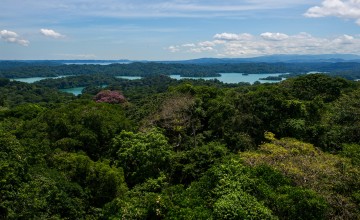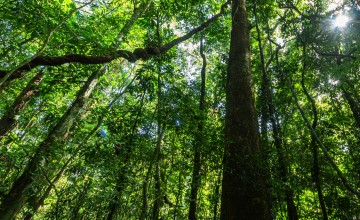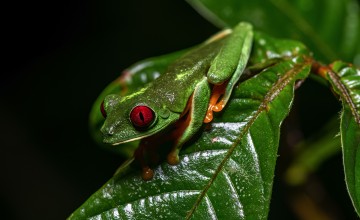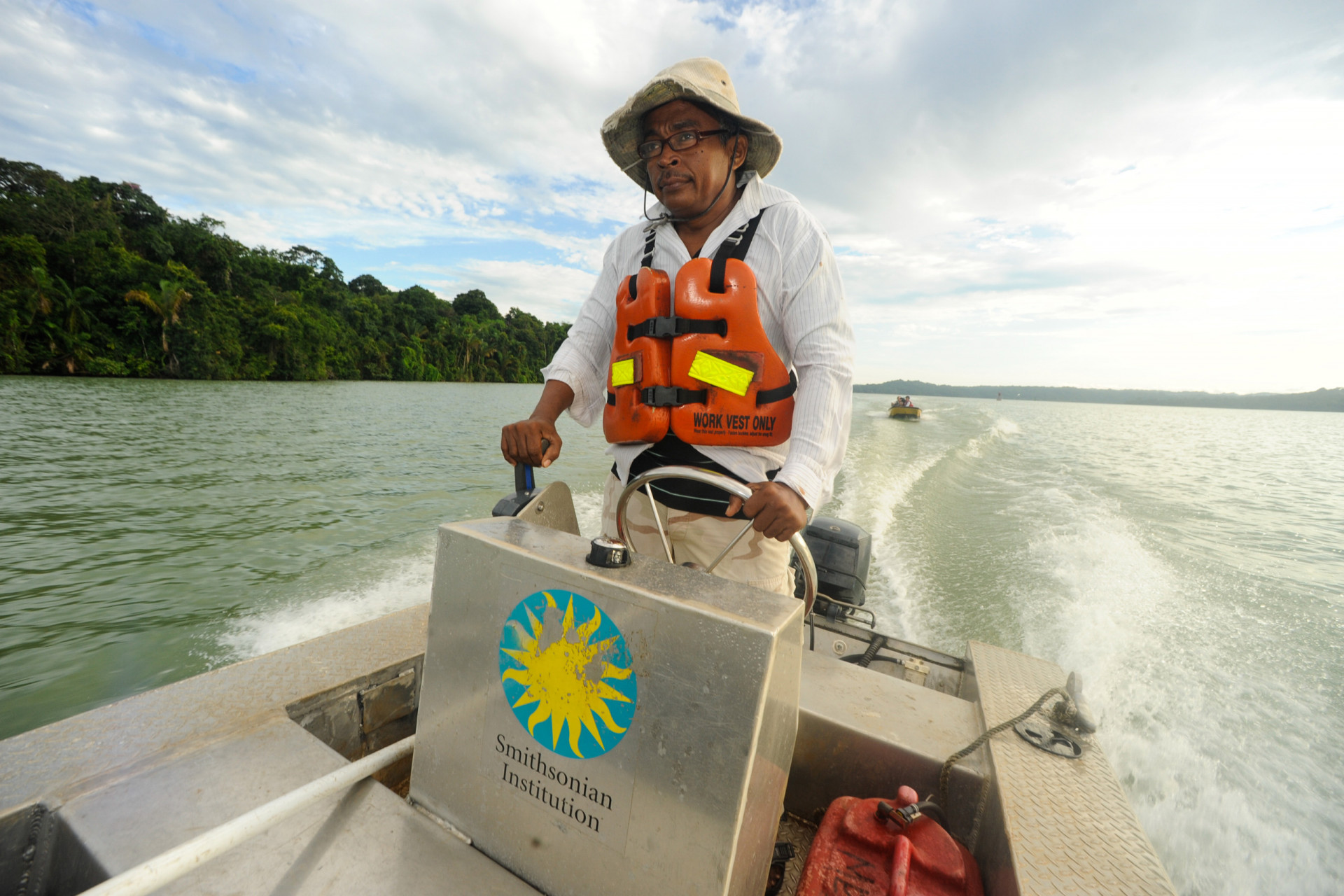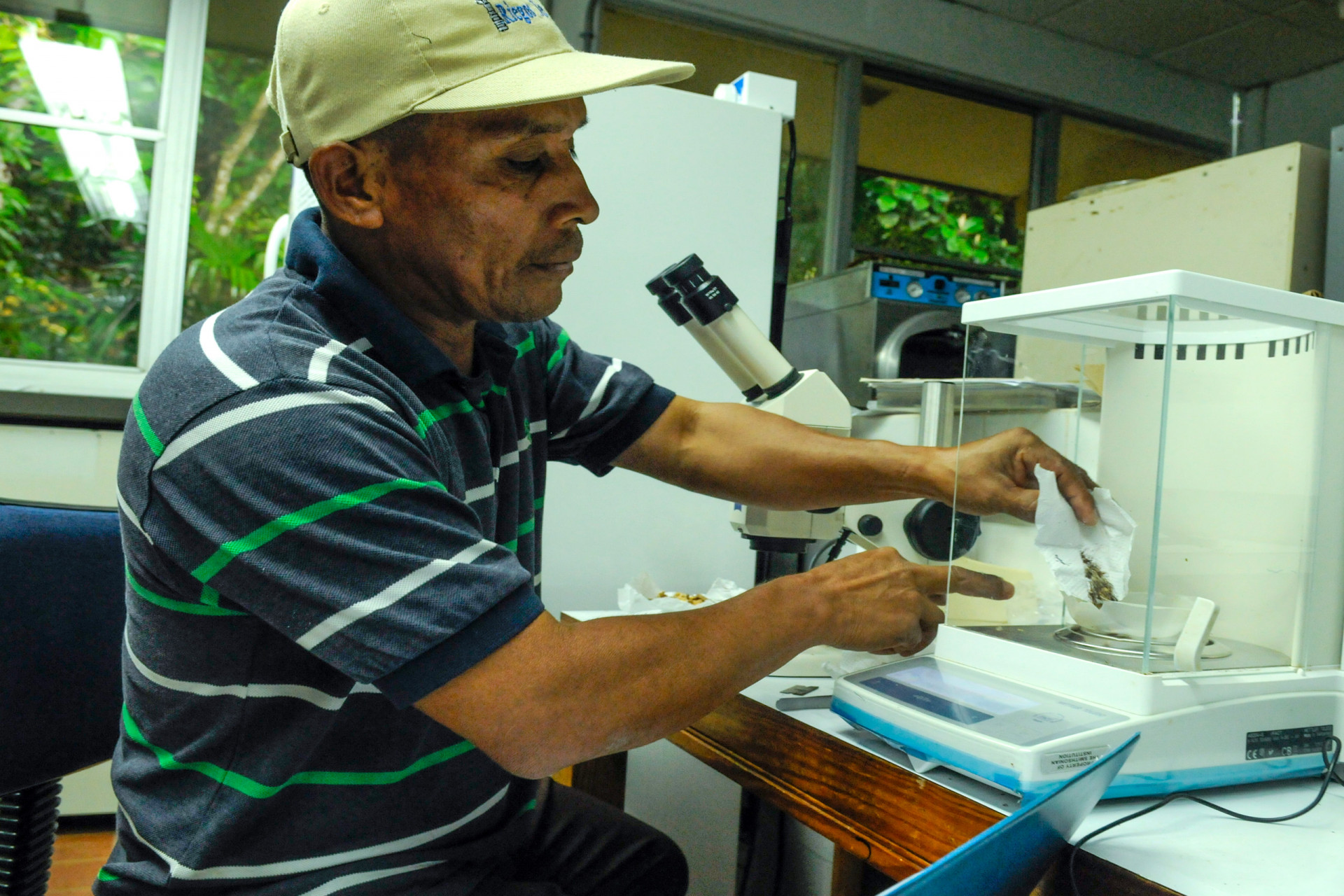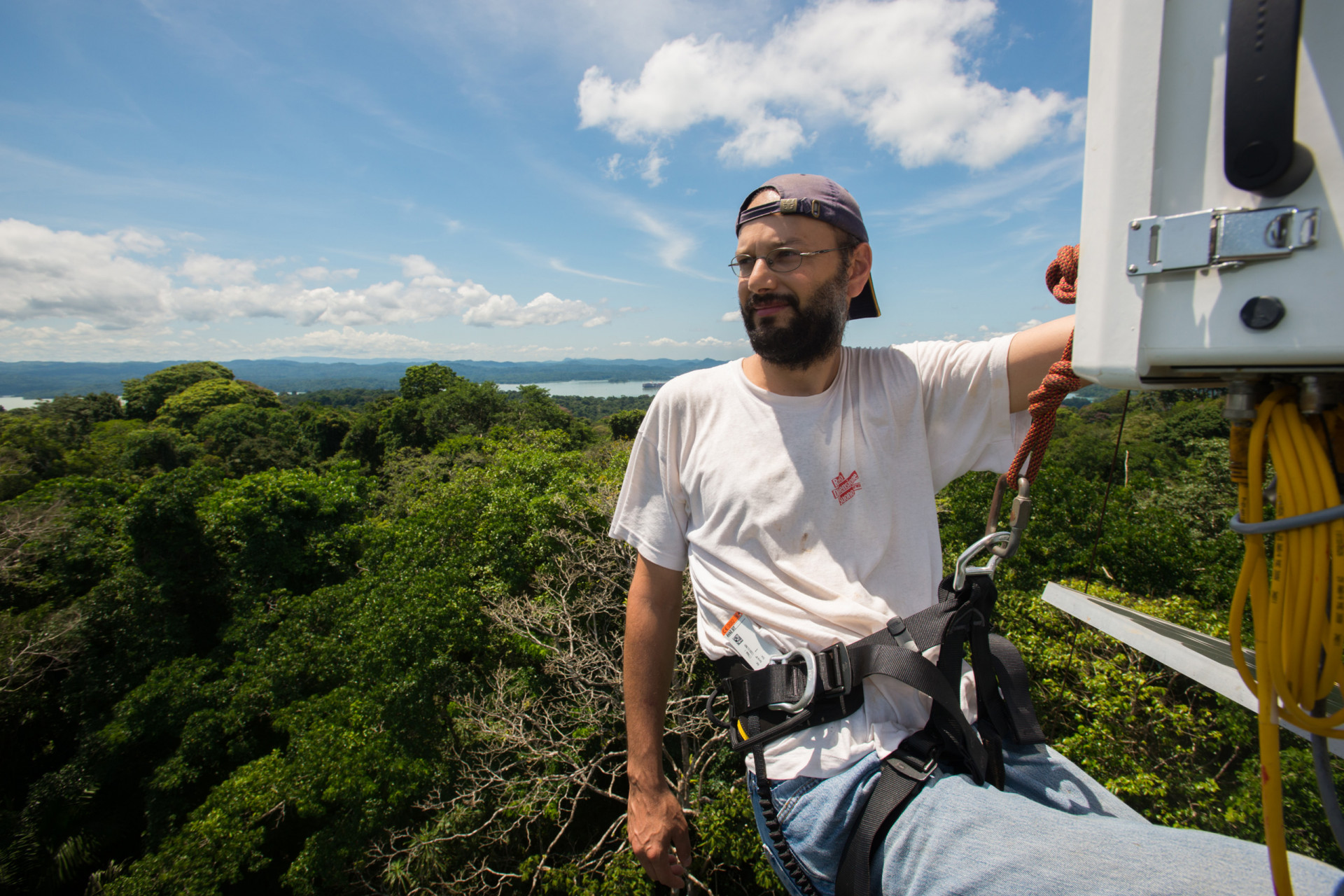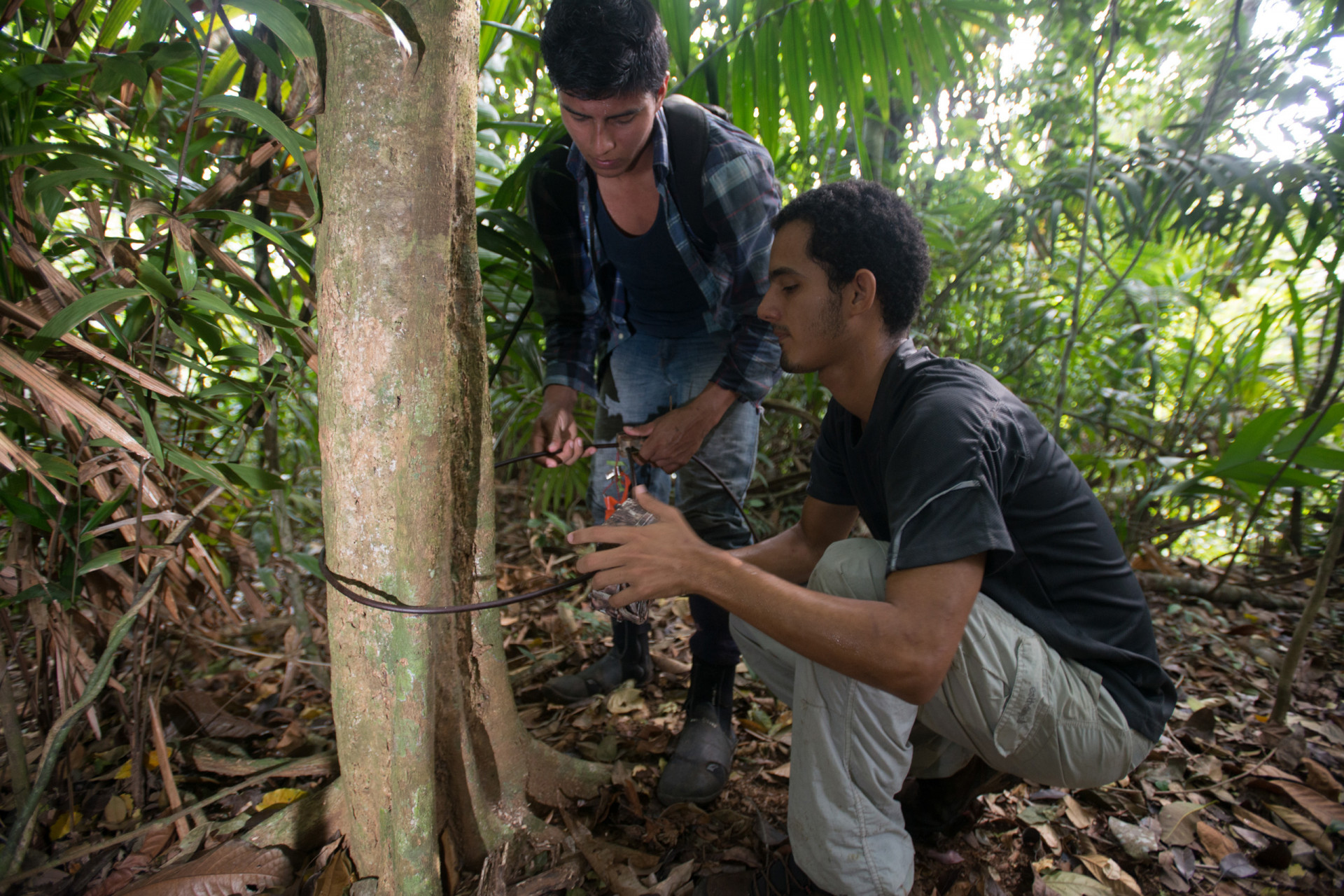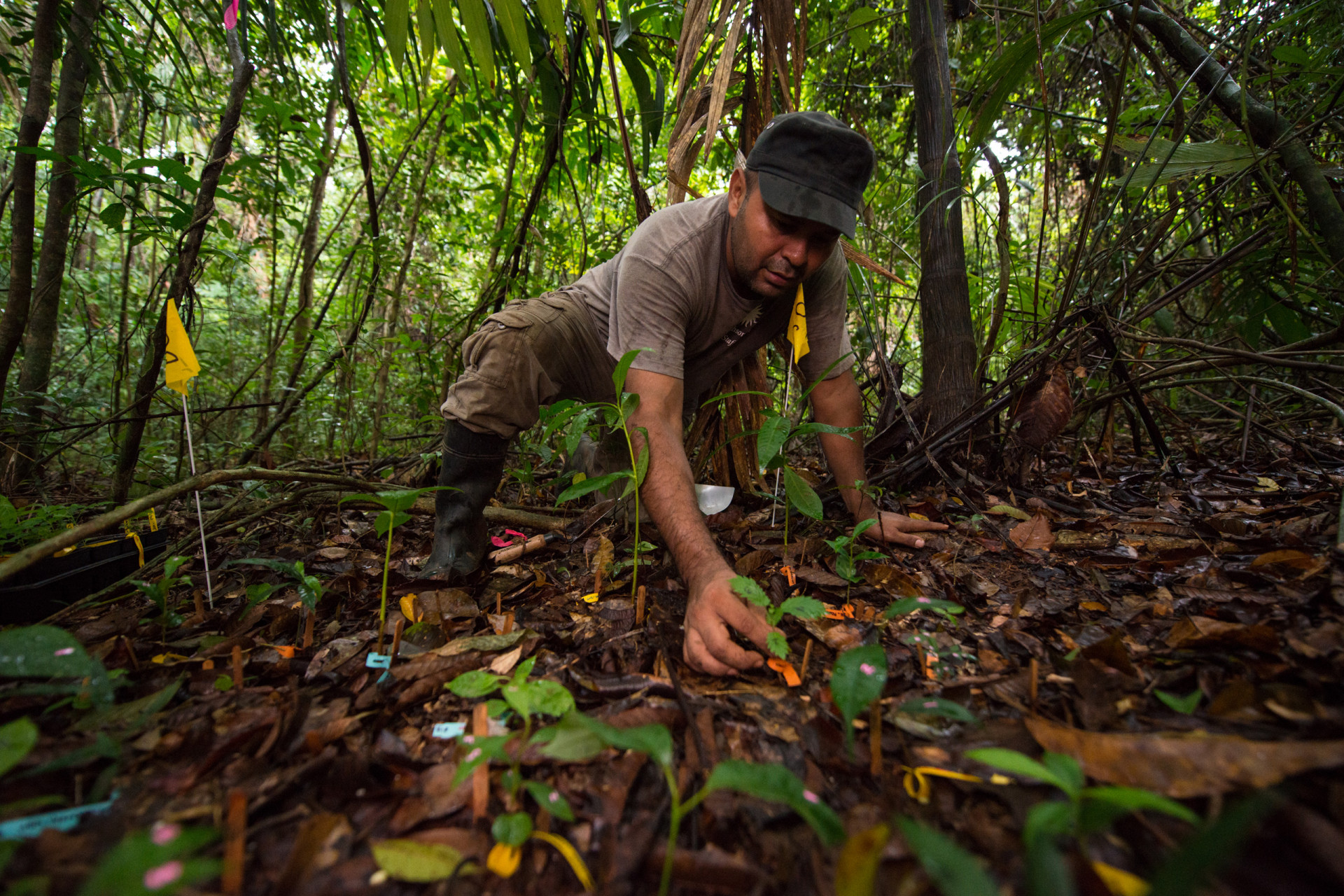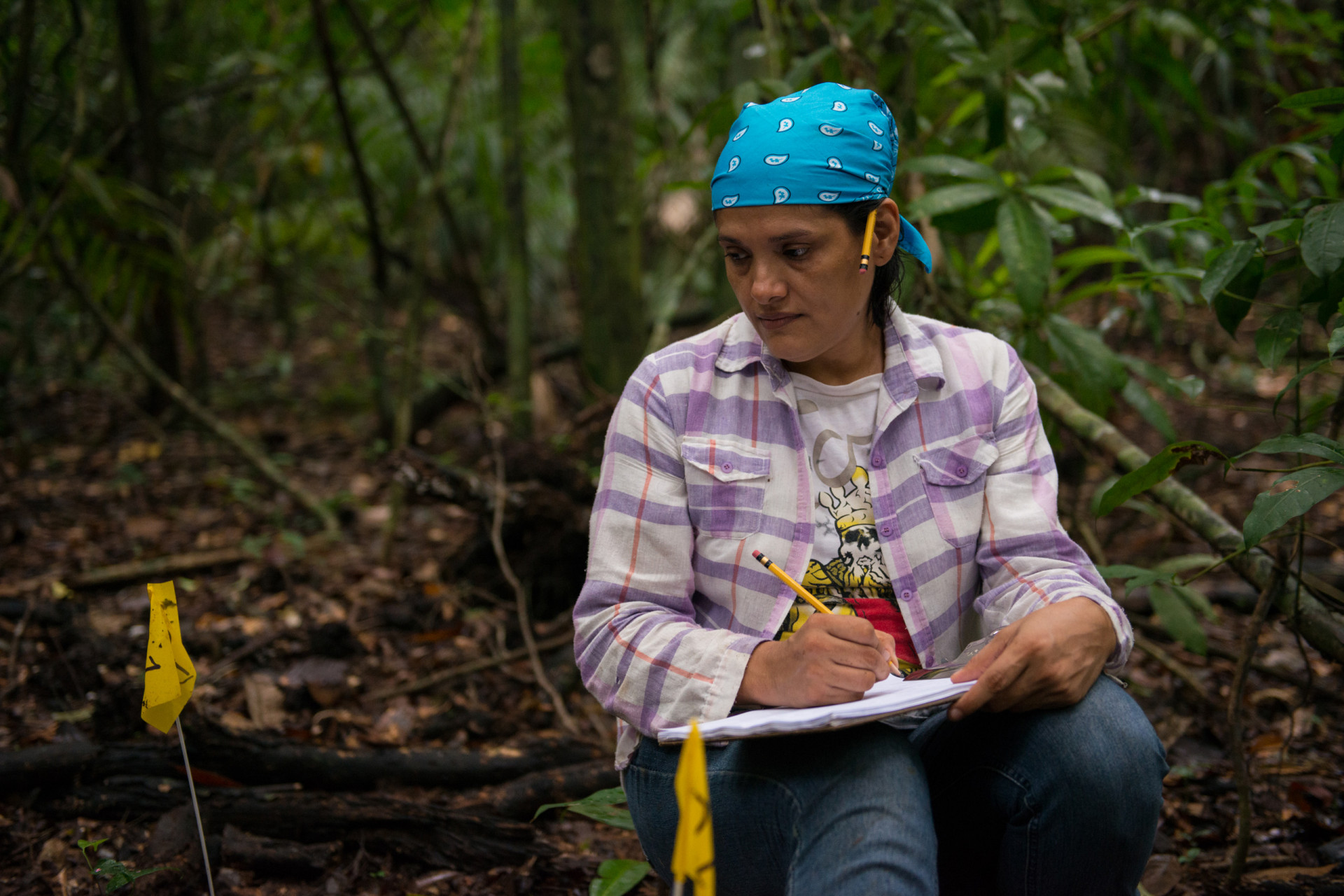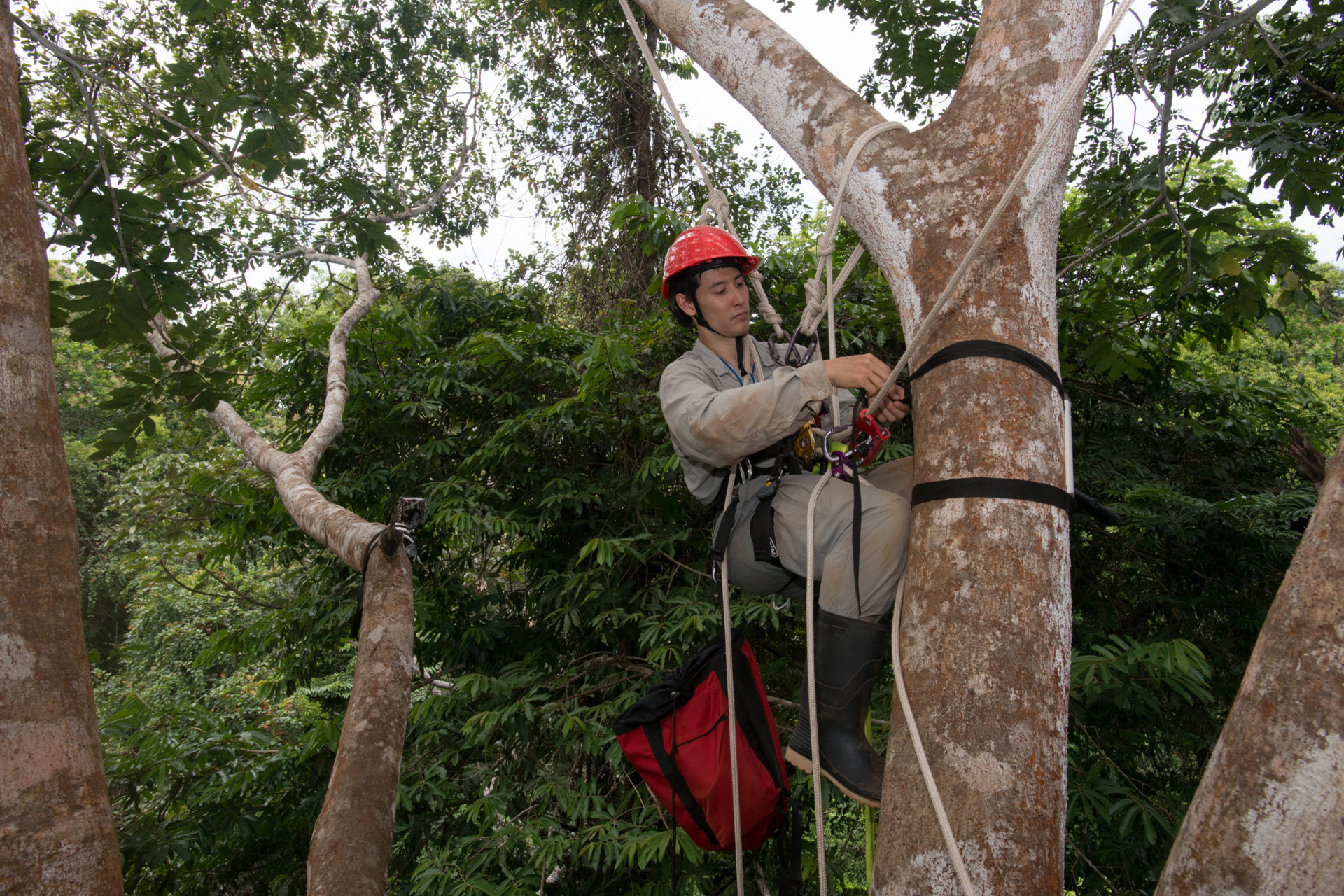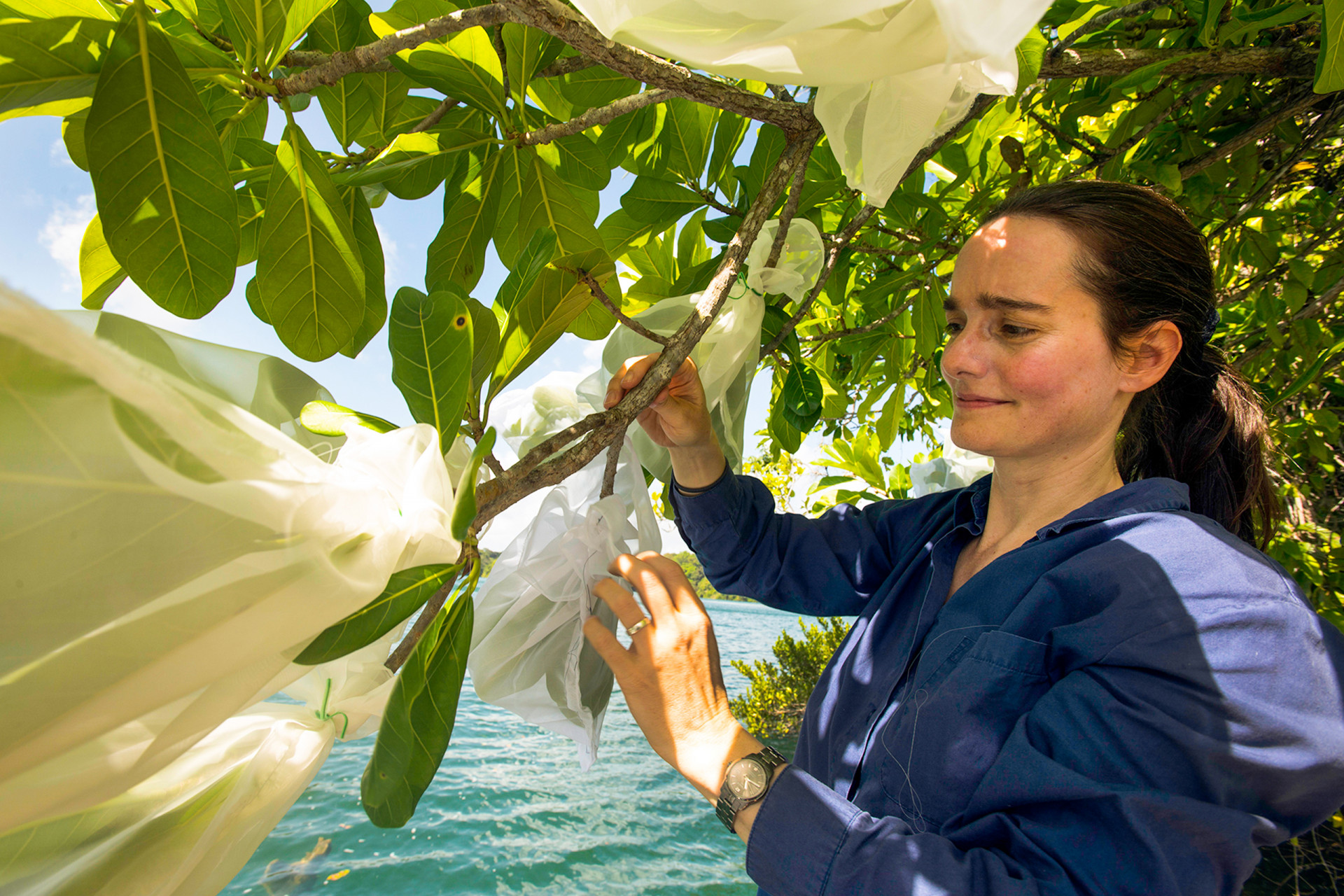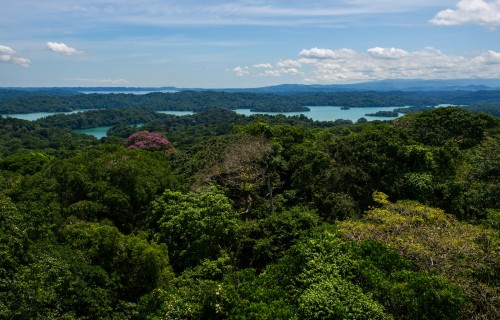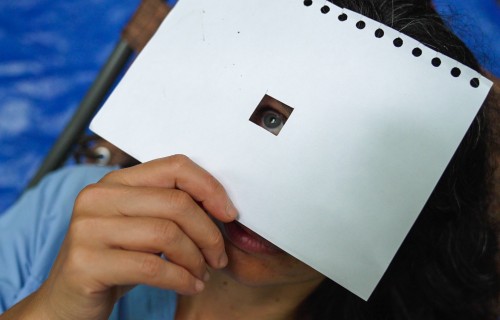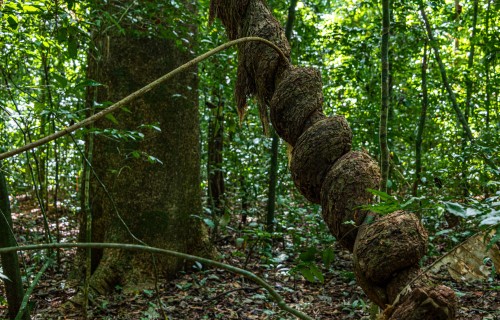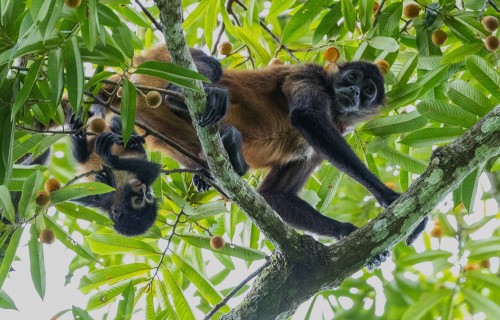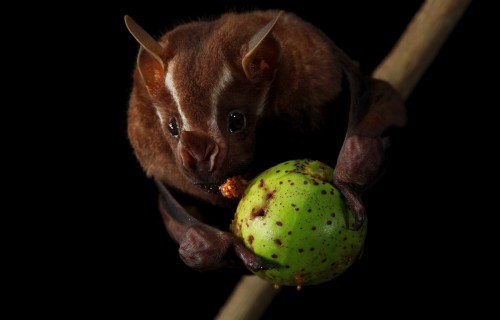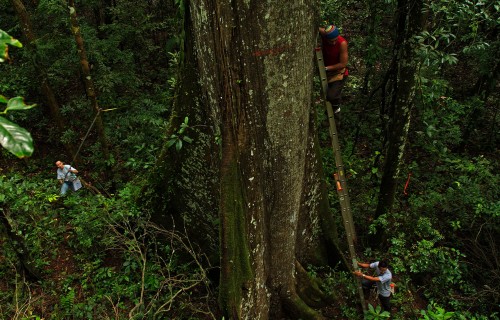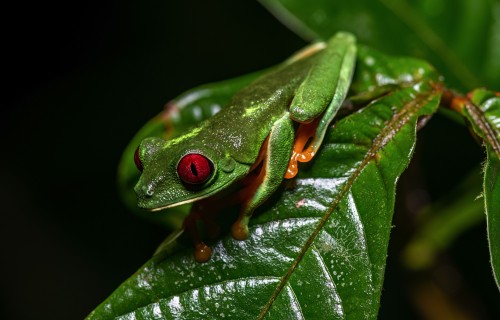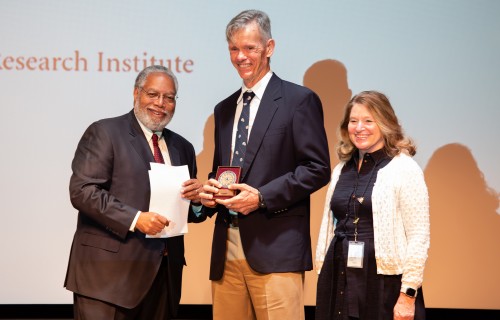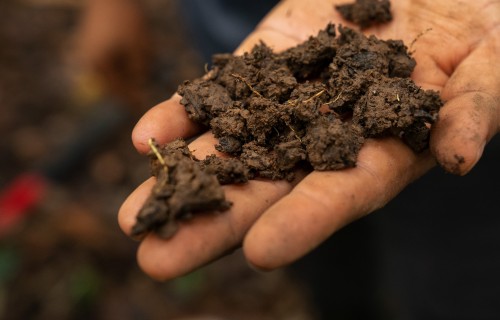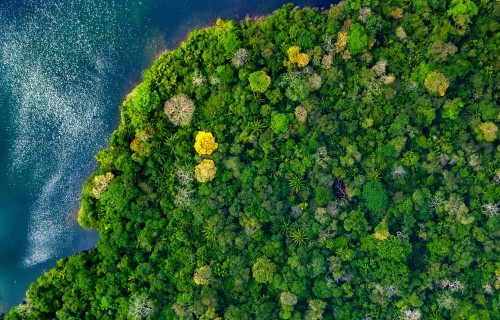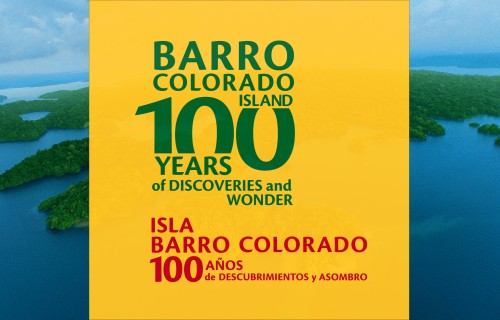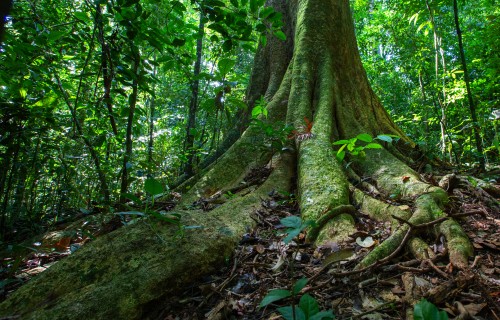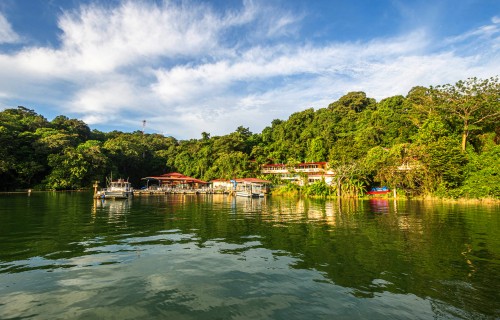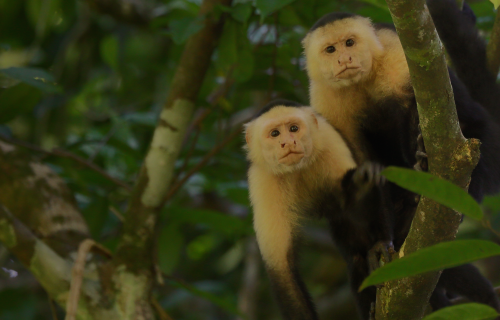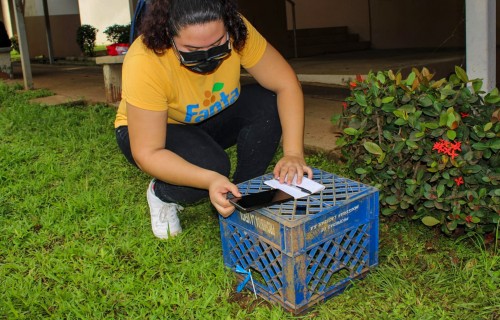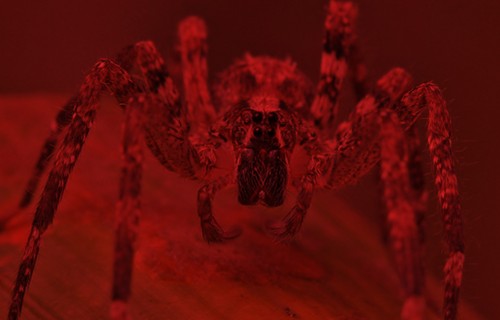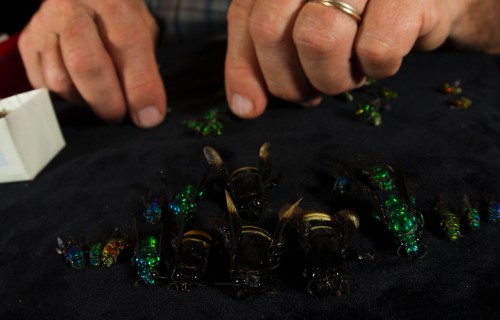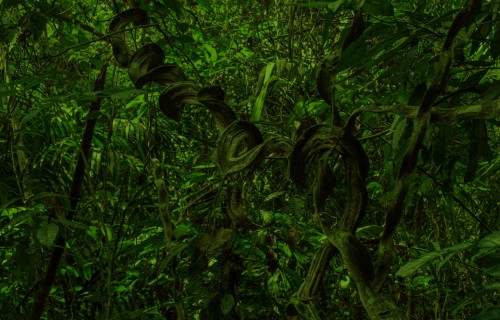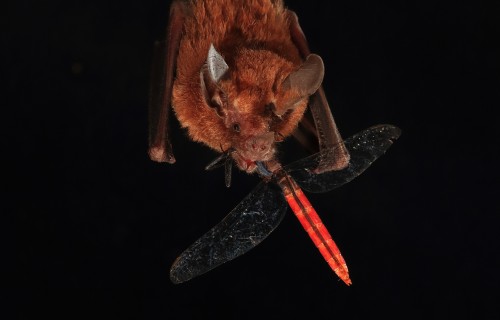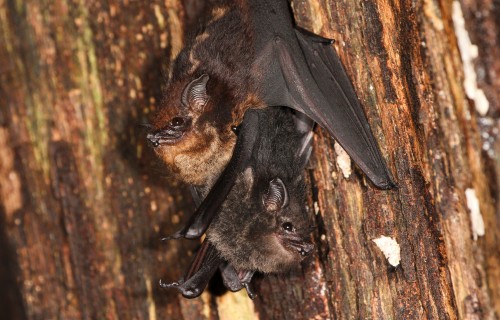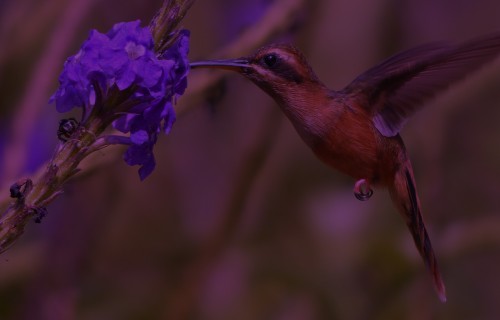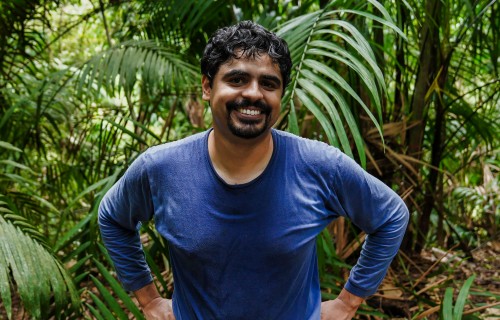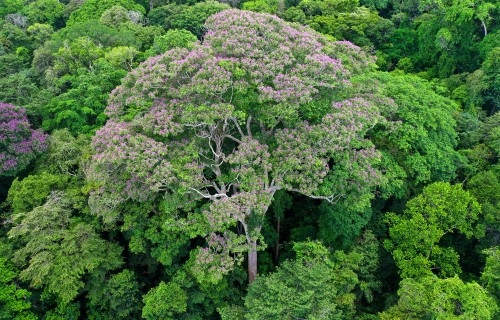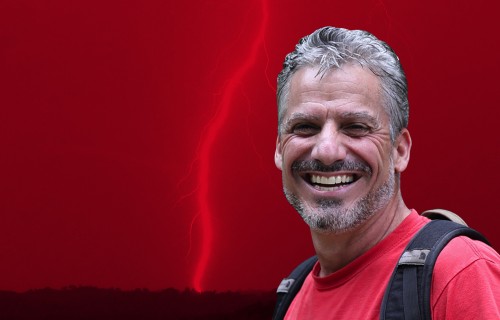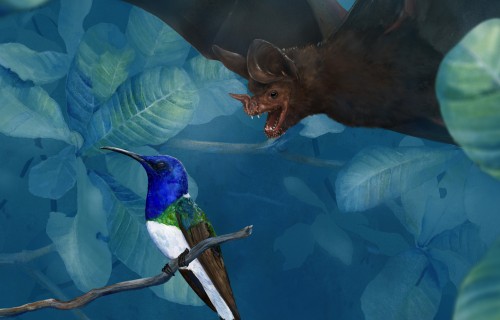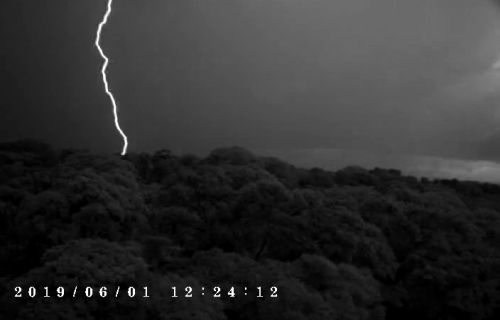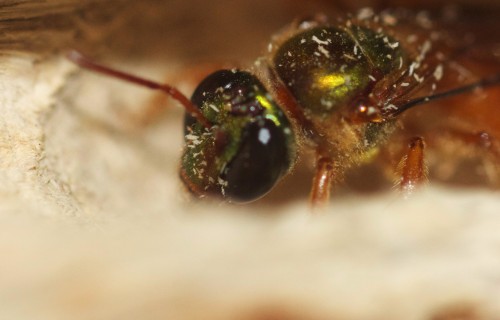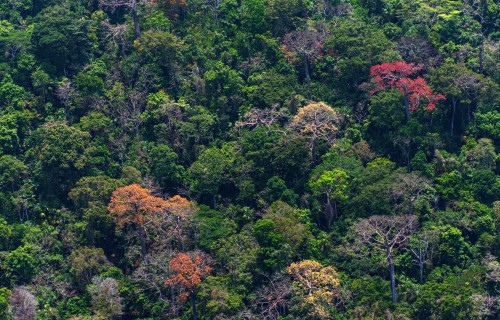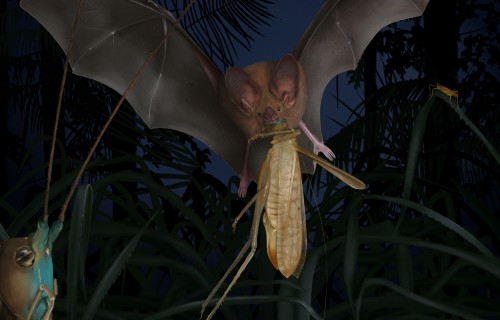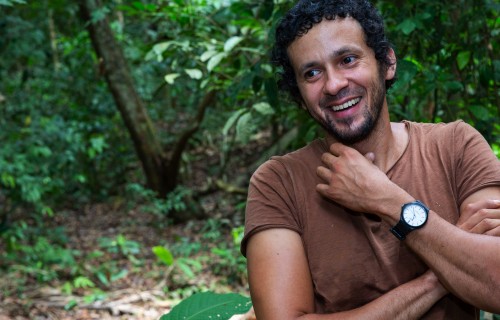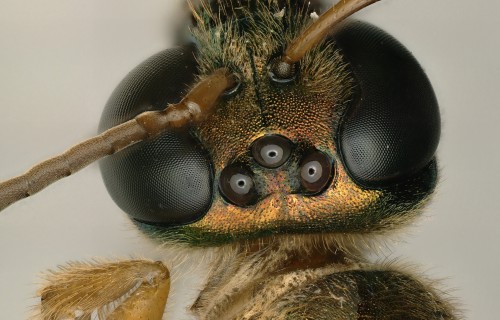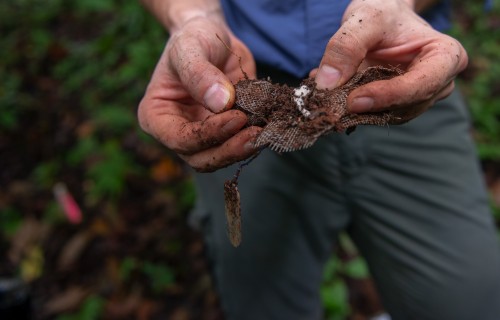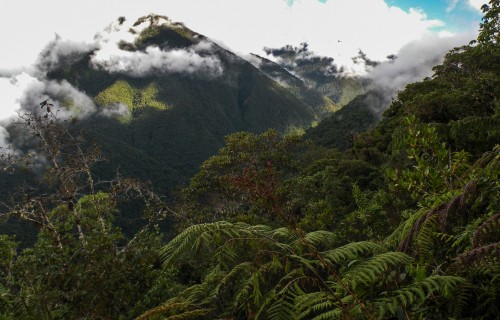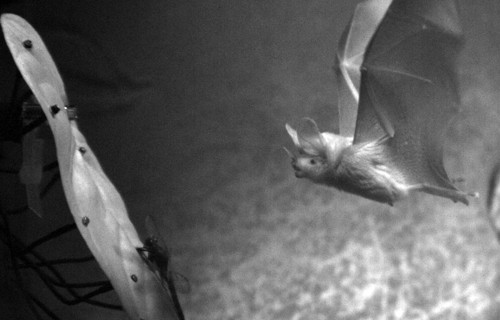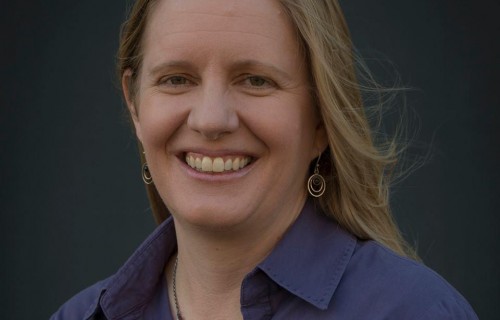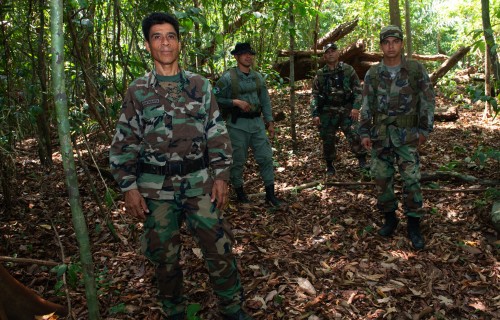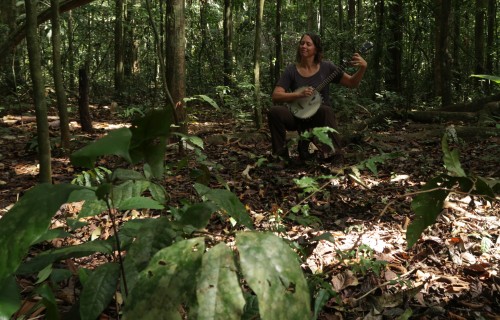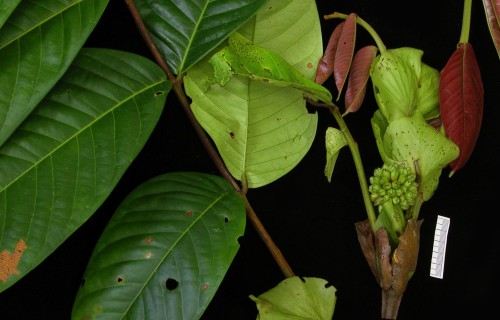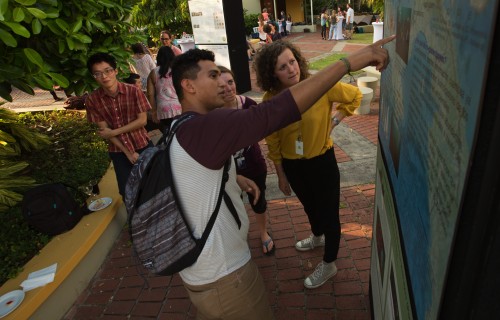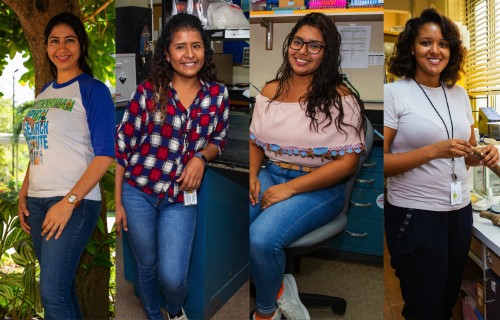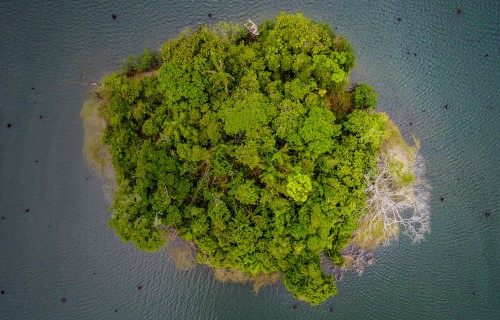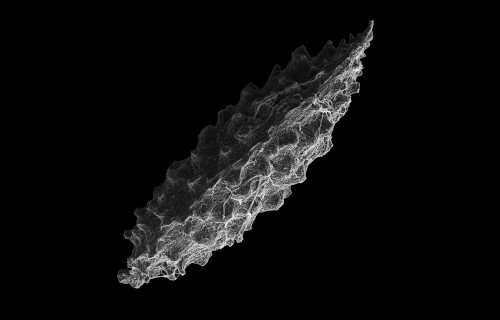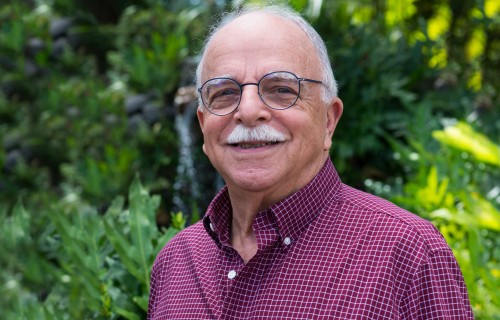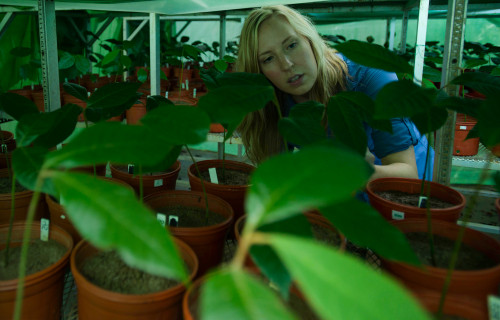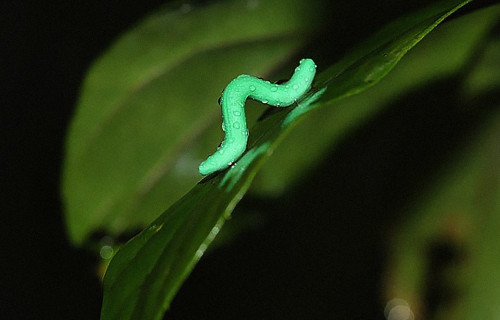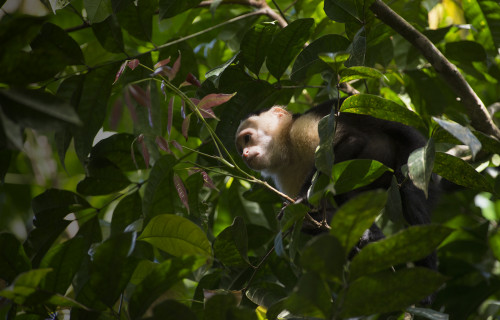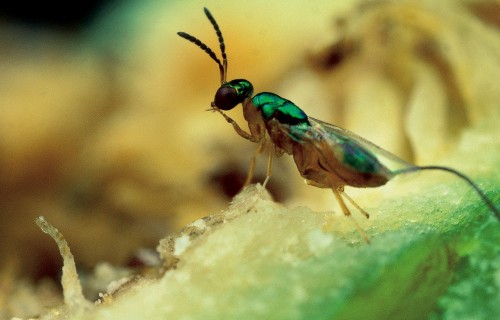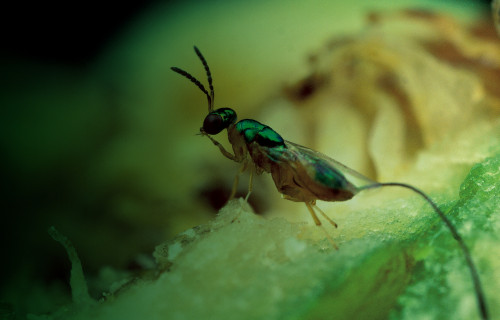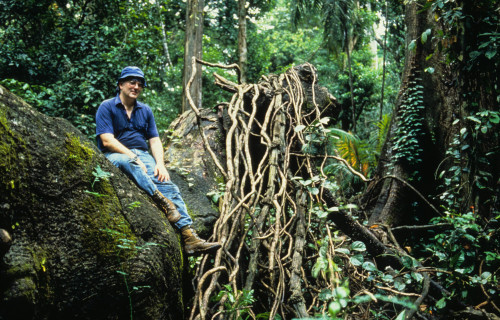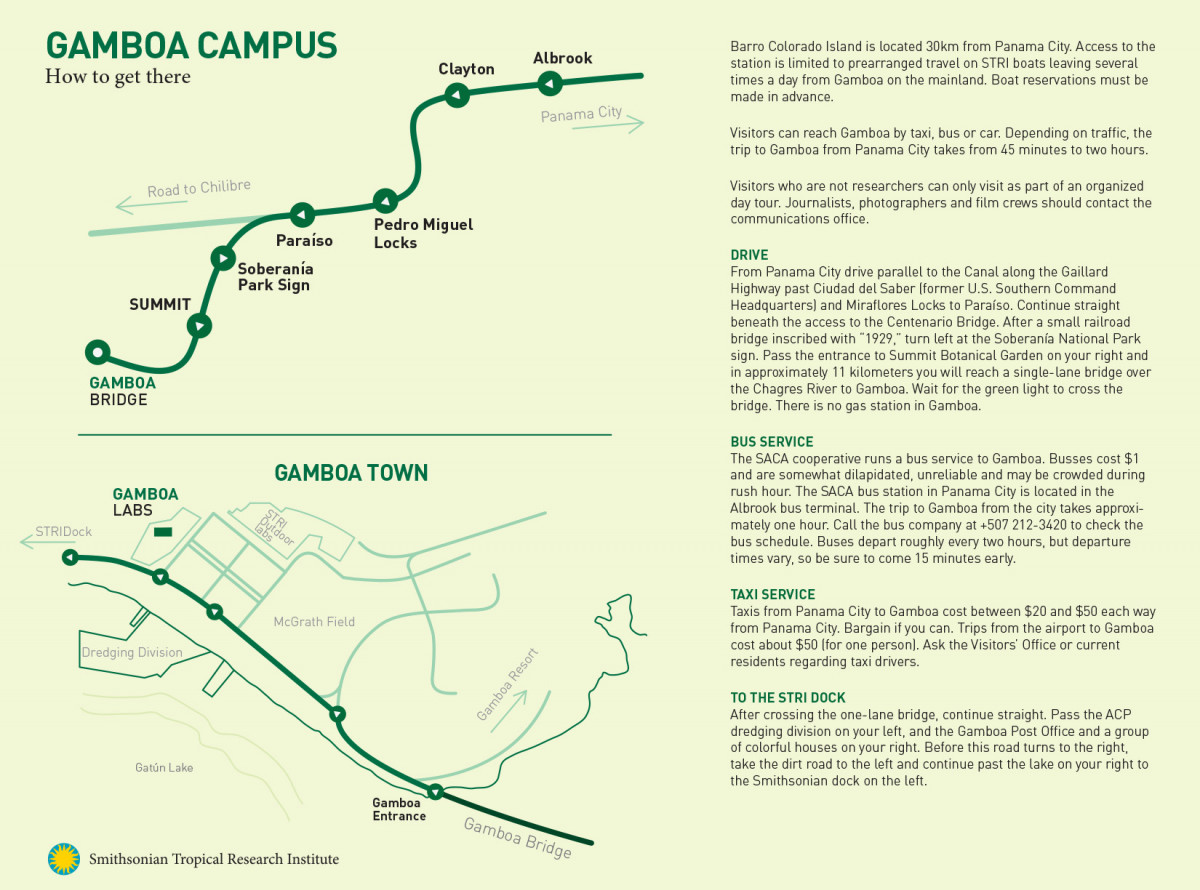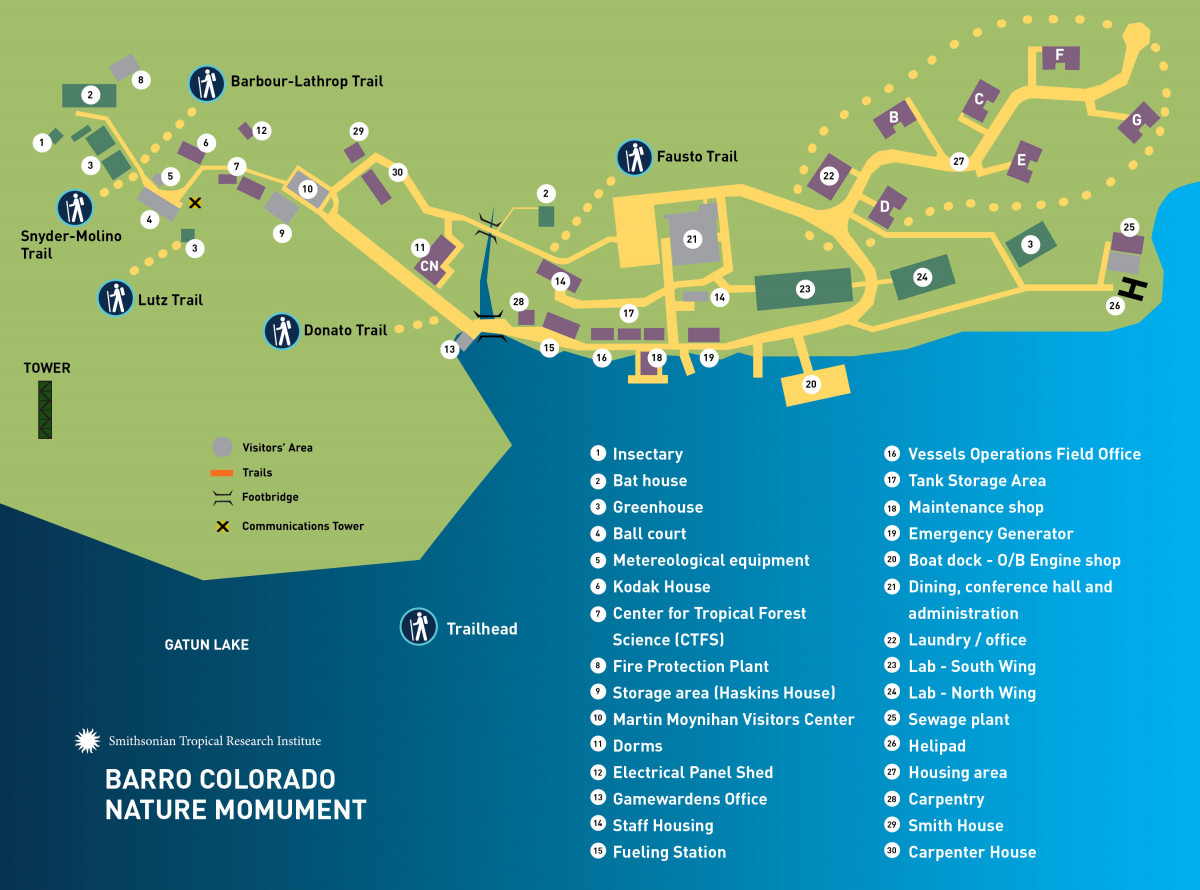




You are here
Barro
Colorado
Nature Monument
The most intensively studied
tropical forest in the world
Projects and Stories
Barro Colorado
Seminars & Events
Currently, we have no upcoming seminars. For more information click here.
A mecca for tropical biologists, Barro Colorado Island and five surrounding peninsulas provide easy access to central Panama’s lowland tropical forest. The 1,560 hectare island was formed when engineers dammed the Chagres River in 1914 to create Gatun Lake, the main channel of the Panama Canal.
Enthusiastic interactions among more than 400 students and experts in their fields who visit each year lead to innovative research projects and have contributed to the more than 13,000 STRI scientific publications since Barro Colorado became a reserve in 1923.
Research
On Barro Colorado Island, we study everything from lightning strikes on towering trees to the microbes and chemical cocktails that engineer mind-boggling plant and animal diversity. Nearly 100 years of climate data, four decades of environmental monitoring and the establishment of the first long-term, large-scale tropical forest monitoring plot in 1980, provide critical tools to learn how tropical forests and their inhabitants change through time.
Science in Action
Above the tropical forest canopy,
sensors capture the fluxes of gases
between the trees and the atmosphere
Art and science converge in
Irene Kopelman’s latest work
Is the world’s biggest vine on Panama’s Barro Colorado Island?
Unlocking forest biodiversity: What can Virola nobilis trees teach us about tropical ecology?
STRI-McGill field course weaves together natural history, social science, tropical ecology, and cultural exchange
An extinct mangrove forest discovered on Panama’s Barro Colorado Island
BAT ISLAND: A Journey into the Hidden World of Tropical Bats
A revolution in forest carbon verification
Like repels like: Social distancing may explain coexistence of biodiverse tree species in tropical forests
Barro Colorado Island,
100 years of science and discoveries
Bezos Earth Fund grants $12 million to Smithsonian to support major forest carbon project
Smithsonian honors
STRI’s Joe Wright
Getting to the roots: How does limiting rainfall affect tropical forest carbon storage?
100 Years of Tropical Biology at the Smithsonian’s Barro Colorado Island Research Station in Panama
Barro Colorado 100 years
of Discovery and Wonder exhibit
opens in Washington
Termites could play an important
role in climate change
Some tropical trees
won’t be defeated by lightning
My Journey to Barro Colorado Island
(Part 3 of 3)
Science is a team effort: 40 years of forest dynamics research on Barro Colorado Island
(Part 2 of 3)
My Journey to Barro Colorado Island
(Part 1 of 3)
Solving mysteries of Panamanian
fauna with camera traps
Drones help solve tropical
tree mortality mysteries
A young biologist shares her love
for eight-legged creatures
Orchid bees show remarkable
resistance to major climate events
Dramatic liana increases in old-growth tropical forests is linked to natural disturbance and climate change
Hearing sensitivity of bats may
explain their great diversity in
tropical forests
Similar to human babies, this bat species learns to communicate through babbling and vocal imitation
Biodiversity loss despite
a century of protection
How will the biggest tropical trees
respond to climate change?
The ecological effects of
lightning in a tropical forest
DNA in fringe-lipped bat poop reveals unexpected eating habits
Mother bats use baby talk
to communicate with their pups
Biodiversity may limit invasions:
Lessons from lizards on Panama Canal Islands
Lightning strikes more than 100 million
times per year in the tropics
Recycling old genes to get new traits – How social behavior evolves in bees
A Temperature Tipping Point
for Tropical Forests
Courtship movements
put katydids in danger
How does an intersex
bee behave?
Microbes in warm soils released more carbon than those in cooler soils
Bats use leaves as mirrors to
find their prey in the dark
Pathogens may have facilitated the evolution of warm-blooded animals
Where science meets music: a banjo player
listens for the songs of katydids
Innovation by ice cream bean
relatives explains biodiversity
Can Evolution Rescue Lizards
From Climate Change?
Tropical Forest Seeds Have
Three Survival Strategies
Ira Rubinoff,
Emeritus Director,
retires from STRI
Whose shadow is safer?
Predation Is More Intense at Low Altitudes and Low Latitudes
Monkey movements
explained by forest
structure in Panama
Why study symbiotic
relationships in Panama?
What do millions of tree measurements
say about Climate Change?
Do pests keep rare tree species from becoming common?
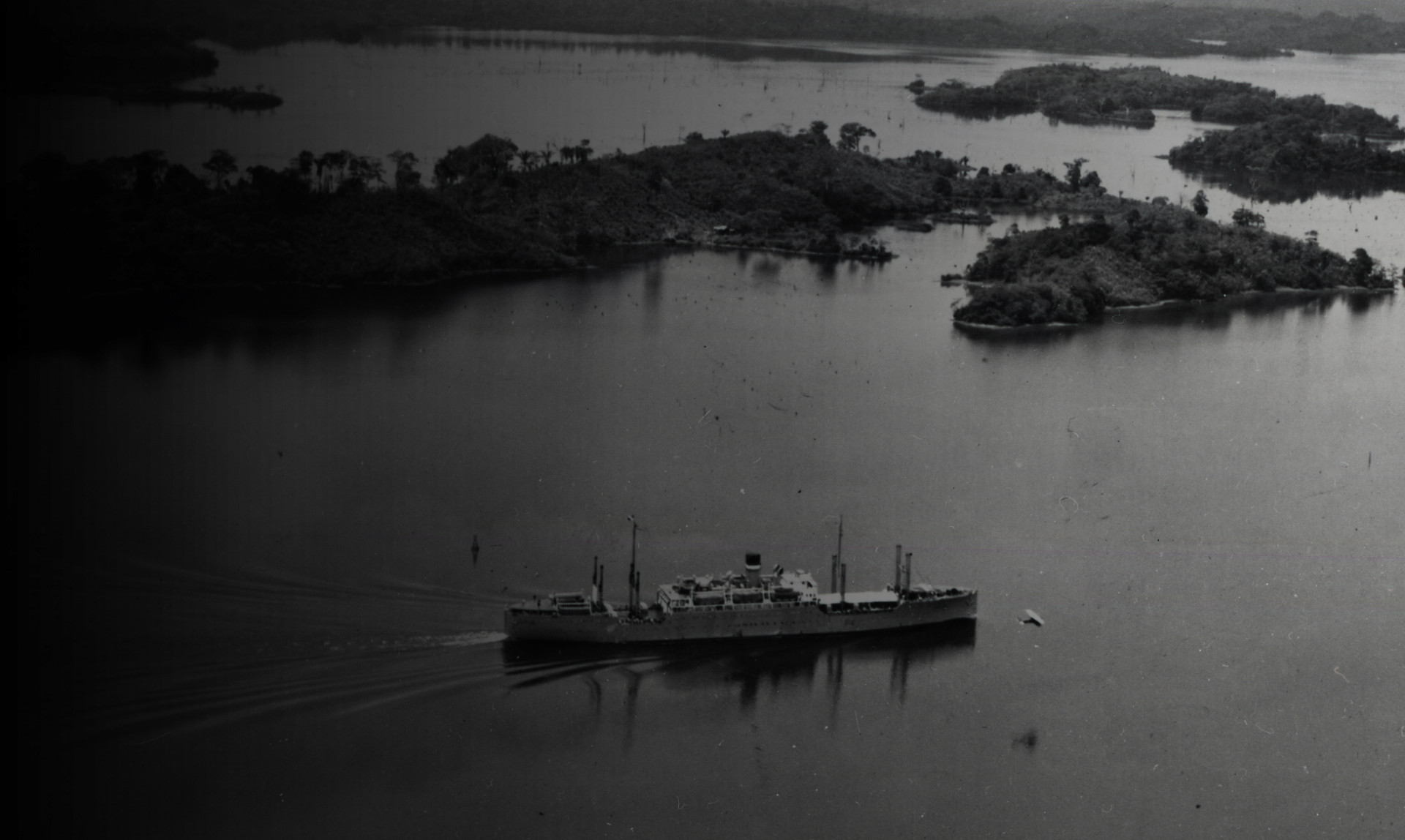
Engineers dammed the Chagres River to create Gatun Lake, the main channel of the Panama Canal. Barro Colorado Island, named for its red clay soil is the largest island in the lake, covering 15 square kilometers.

The Institute for Research in Tropical America, a group of private foundations and universities under the U.S. National Research Council, convinced the former U.S. Canal Zone government to establish the Canal Zone Biological Station on Barro Colorado. With $17,000 from private donors, the laboratory opened its doors in March, 1924. The island, with James Zetek as resident naturalist, soon acquired an international reputation as the leading field station for studies of tropical biology
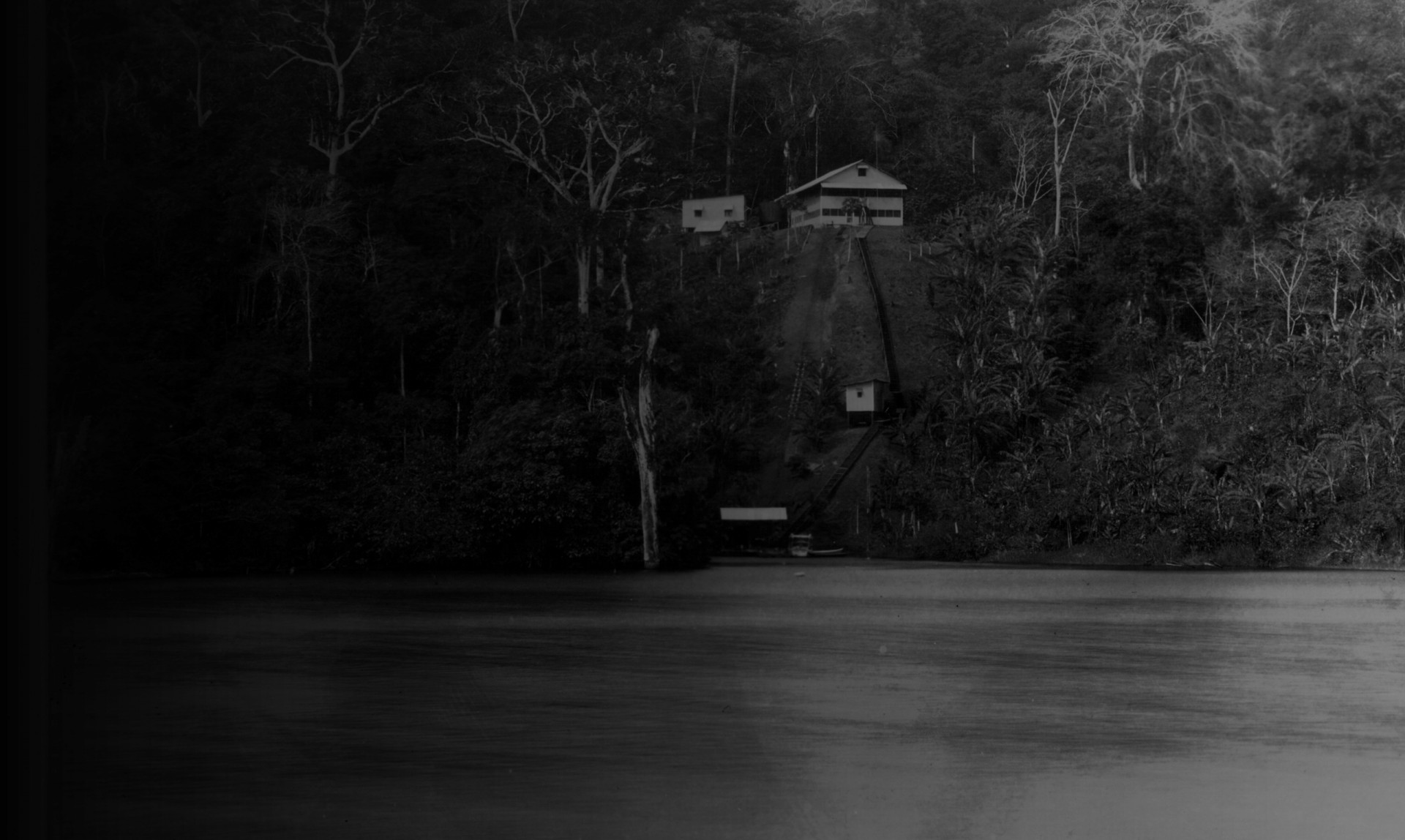
As World War II began, an act of the U.S. Congress placed the management of the independent research station under a board composed of the heads of certain government executive departments and several prominent scientists.

Station management was officially transferred to the Smithsonian Institution.
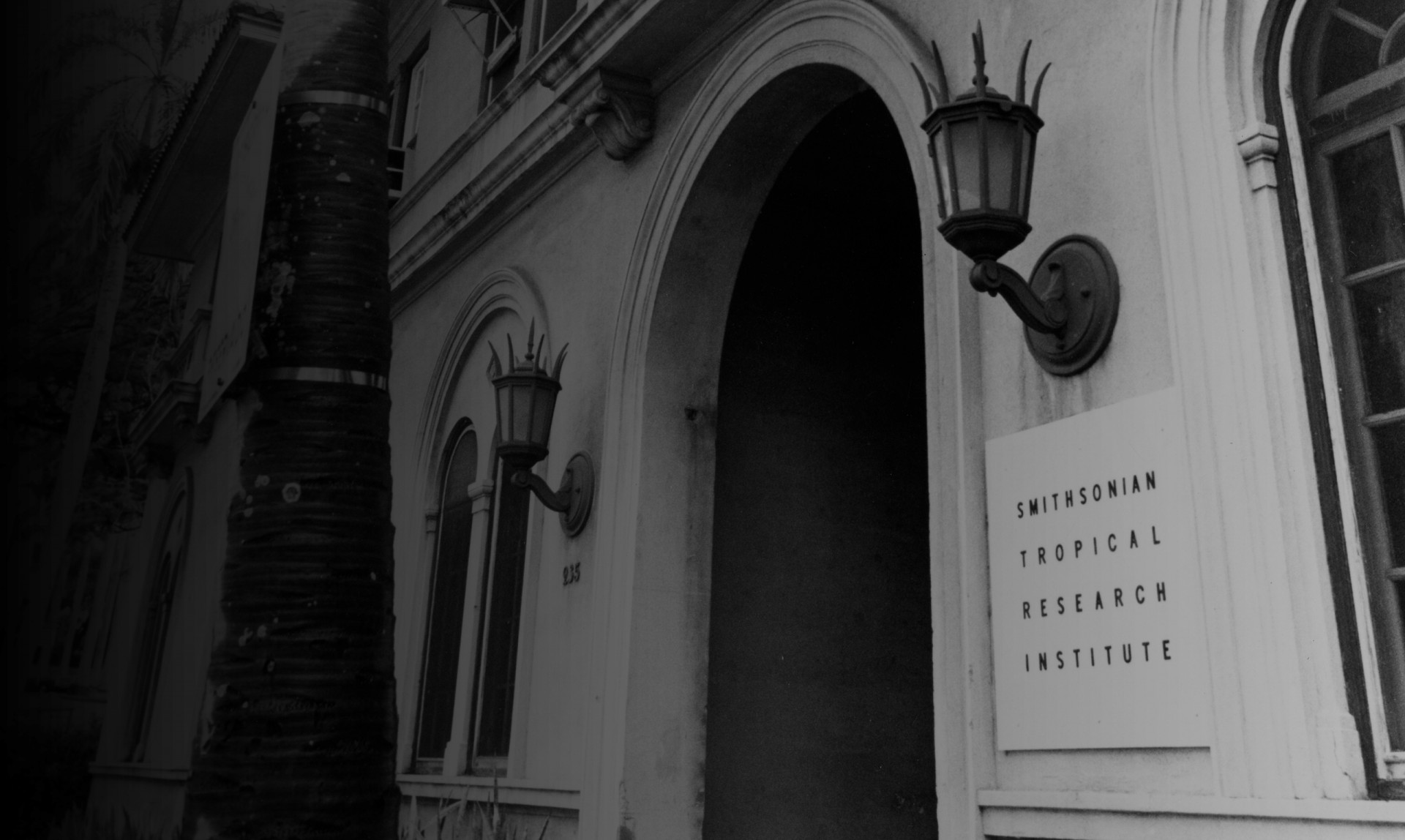
Island Naturalist Martin Moynihan urged the Smithsonian to create the Smithsonian Tropical Research Institute, headquartered in Panama, but with the broader mission of studying tropical biology around the world.
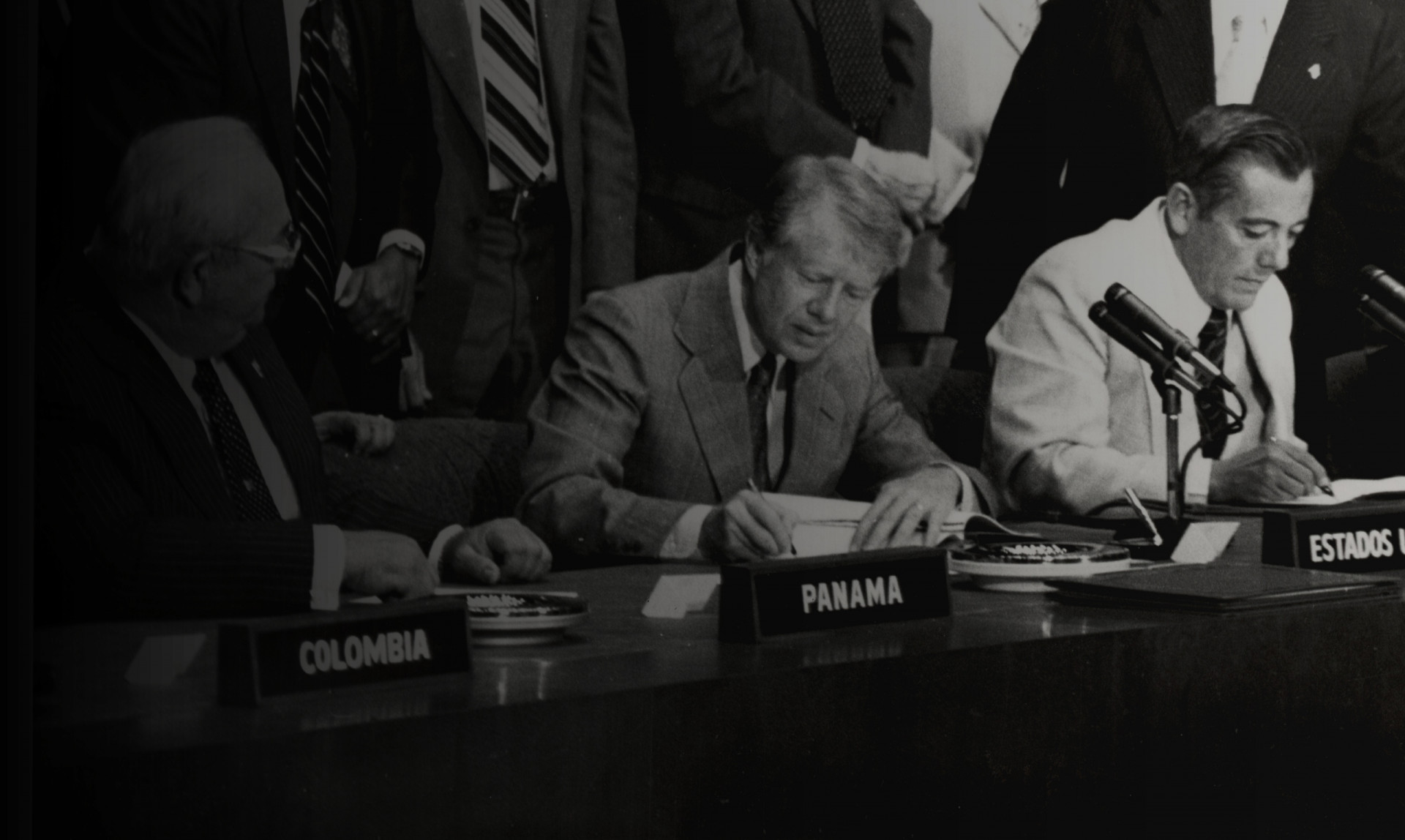
One of the first areas to revert to Panamanian territory as a result of the Carter-Torrijos Canal treaties, the Barro Colorado Nature Monument includes Barro Colorado Island as well as a buffer zone formed by Gigante, Peña Blanca, Bohío, Buena Vista and Frijoles peninsulas on the mainland. The Smithsonian continues to manage the research station.
People
Scientists who work on Barro Colorado Island each year are supported by a scientific coordinator, park rangers who keep the monument free of poachers, a team of cooks and kitchen staff who supply three meals a day, mechanics who maintain boats for transportation and research and office and maintenance staff who keep the place running smoothly.
Services and Resources
Barro Colorado has first-rate facilities on the doorstep of an isolated tropical ecosystem. Visiting researchers have comfortable dorms, air-conditioned labs and a dining hall where three hot meals are served every day.
The station has laboratory resources available to ensure researchers can process, store and analyze samples. A fleet of small boats is available to move researchers from the island to the adjacent peninsulas, where manipulative field work is permitted. A wealth of long-term forest and climate data help both new arrivals and long-time visitors frame their research in an environmental and historical context that is practically unrivaled anywhere else in the tropics.
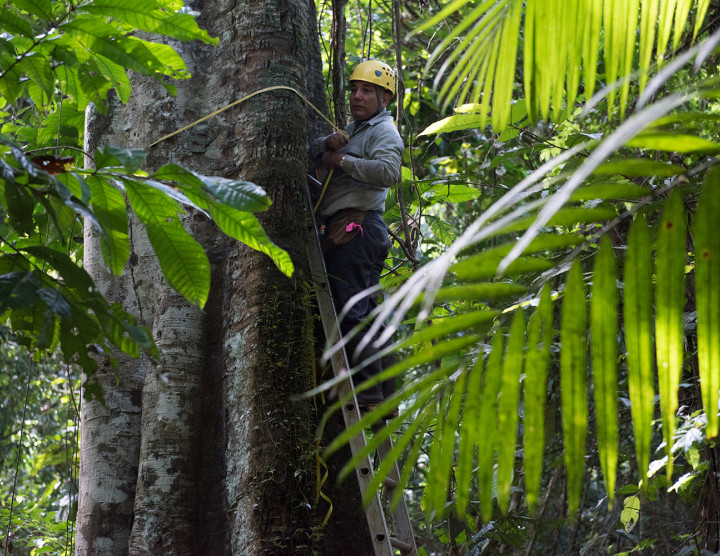
Long-Term Forest Monitoring
The 50-hectare long-term forestmonitoring plot was established in 1980. Every five years since 1980 all free-standing woody stems at least 10 mm diameter at breast height are identified, tagged, and mapped. This first plot set the standard for the Smithsonian’s ForestGEO network, which now monitors the growth and survival of approximately 6 million trees and 12,000 species at 73 plots in 27 countries around the globe.
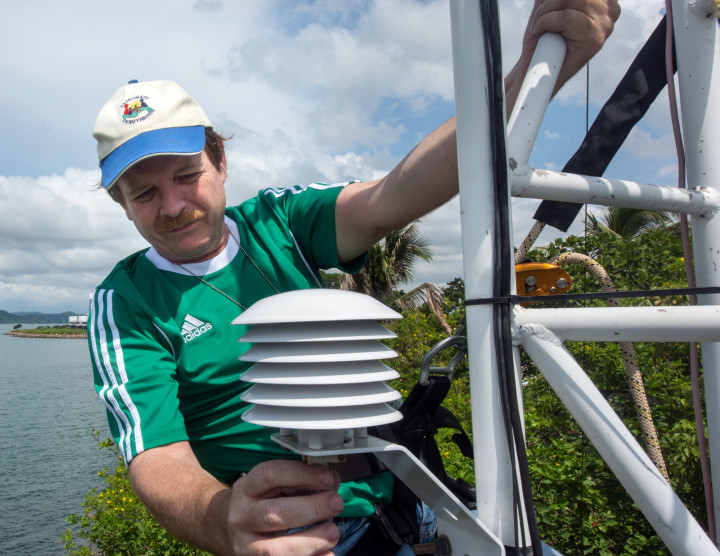
Physical Monitoring Program
The island’s formal physical monitoring program began in 1972 and builds on climate data collected since the construction of the Panama Canal in the early 1900s. The program gathers a full suite of meteorological and hydrological variables from forest floor to canopy with two 50-meter towers and a weir along the Lutz stream. Comparative data are collected by meteorological towers around Panama.

Transportation vessels
Daily transportation to and from the island is on the Jacana, the Morpho and via water taxi. Prior arrangements need to be made for shipping equipment or excess luggage. Please contact the scientific coordination office to arrange for shipping large items to and from the island. Please note: departure times are punctual so plan on arriving at the dock early.

Small research boats
BCI has a small fleet of boats to support scientific research. The boats have traditionally been available for project use to all STRI researchers. To request a boat, you need to have previous boat expertise and a Panama Canal Authority (ACP) small boat operator license. Please contact the scientific coordination office for information on how to obtain an ACP boat license, and to reserve vessels for research purposes. We also dispatch fuel for these boats. Fees vary according to category.
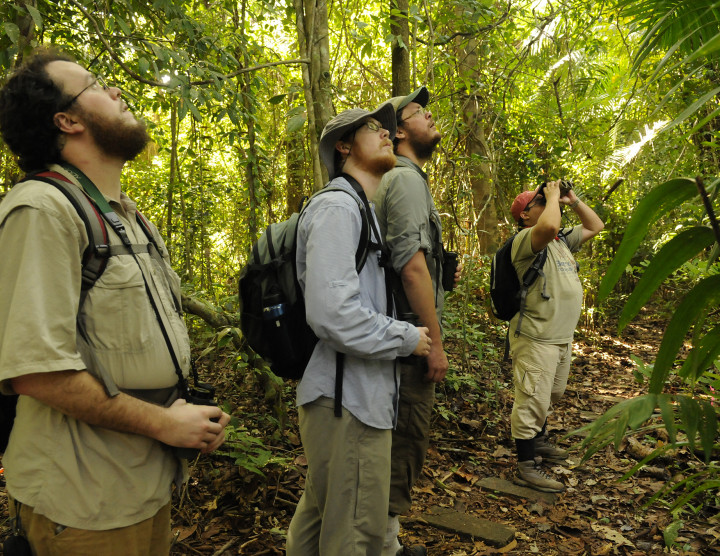
Gigante peninsula
Visitors on field courses and researchers doing manipulative fieldwork may camp around the bohio area. Kitchen and bathrooms are available, and a radio for emergency calls. There are no facilities on the other peninsulas, but these host several ongoing long-term experiments.
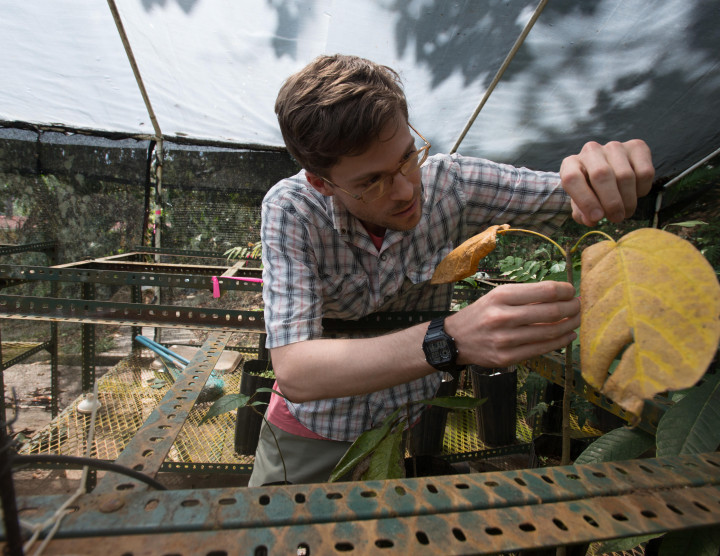
Ambient Labs
BCI has an insectarium, one bat cage, a soil lab and four greenhouses for research. Availability of these ambient labs varies. Visiting researchers are strongly encouraged to plan ahead of time.
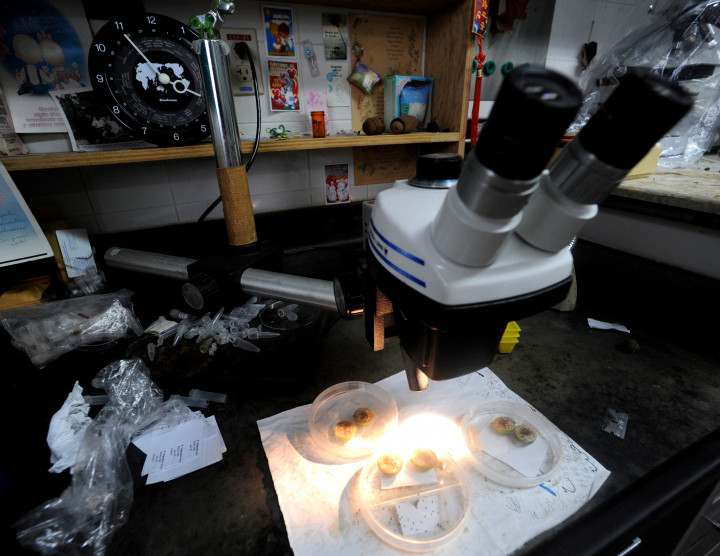
Laboratories and Equipment
Barro Colorado's laboratories are fully equipped with the equipment that field scientists need to collect, process, study, and store samples. There is some general use equipment available for common use. Please contact the scientific coordination office for more information.
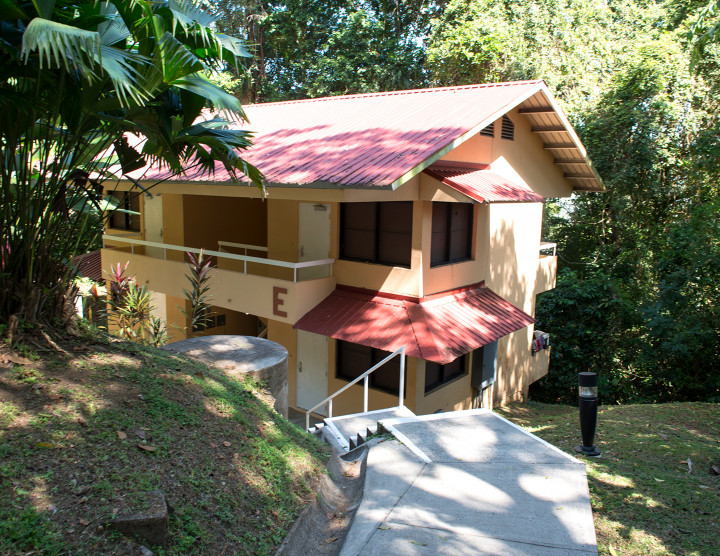
Accommodations
The BCI accommodation is located within the Scientific Station of the Barro Colorado Natural Monument. This is a remote scientific station consisting of 8 buildings and 2 houses, offering a total of 37 shared rooms with capacity for 79 people. Room layout and prices may vary. Some rooms have kitchenettes, air conditioning, and balconies, others do not. Daily meals are included in the rate and are served in the BCI cafeteria. There is Wi-Fi and hot water. For more information, contact vsohousing@si.edu
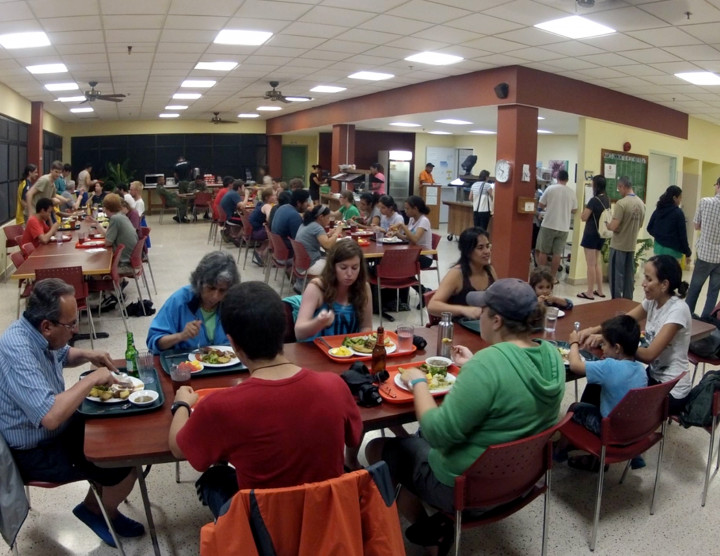
Dining hall
Hot meals are served in the dining hall at 6:30am, noon and 6:00 pm. Vegetarian dishes can be prepared if requested in advance. If you plan to be in the field all day, you can ask the kitchen crew to save meals. Breakfast cereal, milk and sandwich materials are always available. Non-residents need to reserve meals in advance.
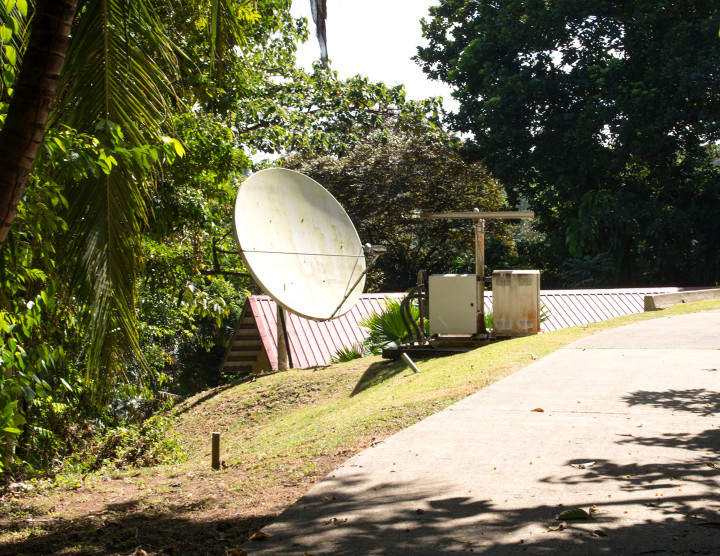
Seismic Station
As part of a $37.5-million U.S. government initiative to improve earthquake monitoring following the devastating tsunami in the Indian Ocean in 2004, a seismic sensor was installed on Barro Colorado Island in 2006. The sensor is one of more than 150 sensors in the U.S. Geological Survey’s Global Seismographic Network.
Maps and Directions
Barro Colorado Island is located 30km from Panama City. Access to the station is limited to prearranged travel on STRI boats leaving several times a day from Gamboa on the mainland. Boat reservations must be made in advance.
Visitors can reach Gamboa by taxi, bus or car. Depending on traffic, the trip to Gamboa from Panama City takes from 45 minutes to two hours.
Visitors who are not researchers can only visit as part of an organized day tour. Journalists, photographers and film crews please contact the Communication Office.
Visiting Scientist
For Assistance with Housing, Lodging, boat reservations, fees, and other administrative issues
Public
To visit the island on a guided tour
Emergencies
Report all emergencies to STRI security
